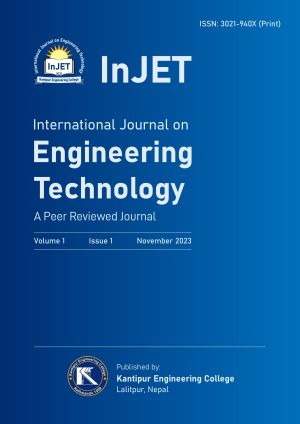Urbanization-Driven Land Use Shifts, Diminished Traditional Water Ponds, and Their Impacts on Water-Dependent Livelihood: A case of Panchkhal Municipality, Kavre District
DOI:
https://doi.org/10.3126/injet.v1i1.60947Keywords:
Traditional Water Ponds, Land-Use Land-Cover, Sources of Water, Water Dependent livelihoods, Water AvailabilityAbstract
The escalating trend of urbanization is reshaping land use patterns, impacting the hydrological cycle, and giving rise to issues like intensified floods and prolonged droughts. Concurrently, Traditional Water Ponds, essential for sustaining surface and ground hydrology, flood control, and livelihood water access, are rapidly declining. In the Panchkhal Municipality of Kavre District, the dependency of households on water for vegetable cultivation, and effective land and watershed management is imperative. This prompted a comprehensive study to analyze changing land use, the status of traditional water ponds, and their repercussions on water-dependent livelihoods. Presently, a concerning 73% of traditional water ponds are either completely abandoned or repurposed for construction. Urbanization has surged dramatically, with a 1662.5% growth rate in the past two decades, reshaping the landscape. This transformation directly affects supplementary water sources that support livelihoods. Notably, traditional spring sources (kuwas) have dried up, with 60 % of the respondent experiencing a decrease in water availability in kuwas which has been fulfilled by the construction of wells, tap, and water pumps.
Downloads
Downloads
Published
How to Cite
Issue
Section
License
This license enables reusers to distribute, remix, adapt, and build upon the material in any medium or format, so long as attribution is given to the creator. The license allows for commercial use.




